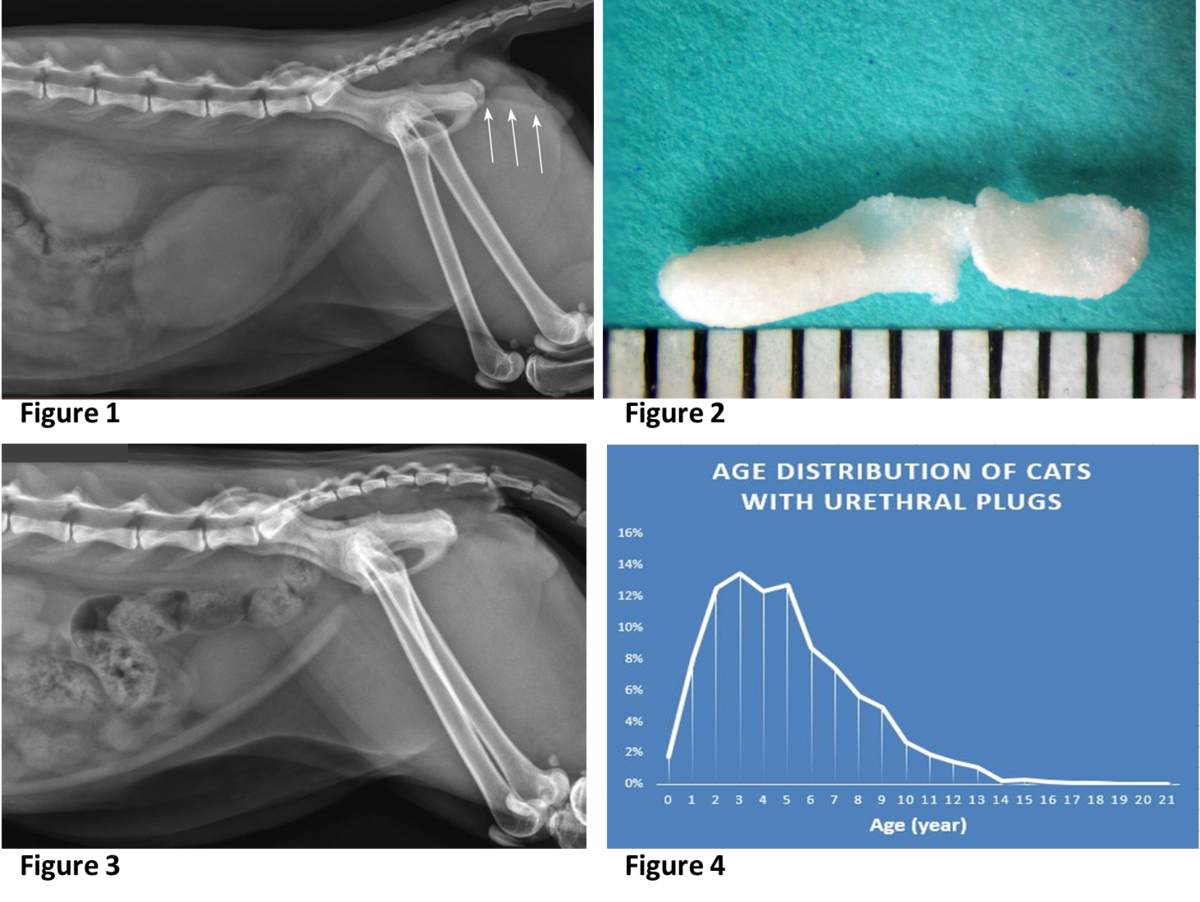Image of the month
Feline urethral plugs
Feline urethral plugs are a common cause for urethral obstruction in the male cat. Typically, plugs contain mineral and organic matrix (e.g. inflammatory reactants, blood, sloughed tissue). Understanding their epidemiology and composition are important to prevent their formation and minimize their recurrence.
Between 2011 and 2018 the Minnesota Urolith Center received over 2000 urethral plugs for quantitative analysis. 82% were retrieved from cats younger than 9-year-old. Varieties of minerals were identified in urethral plugs. 92% were struvite. This information is critical to manage urethral obstruction in cats.
Consider these points.
- Submit plugs for mineral analysis to identify risks contributing to urethral obstruction and ways to prevent future obstructions.
- Almost all plugs were composed of struvite. To prevent recurrence, feed struvite dissolution foods.
- Feed struvite dissolution foods until cats are approximately 9 to 10-years-old. When stopping therapeutic foods, repeat urinalyses before and several months after food change. Recurring struvite crystals is an indication that struvite dissolution foods should be fed longer.
- To avert first-time, life-threatening urethral obstructions, feed struvite dissolution foods in young male cats, especially those with persistent struvite crystalluria.

Figure 1. Lateral radiograph of a 2-year-old cat presenting for inability to urinate. Accumulation of radiodense sand within the pelvic to penile urethra (arrows) identified the cause of the obstruction as a urethral plug.
Figure 2. Urethral plug passed by the cat in figure 1. The mineral component was 100% struvite. Each tick mark equals 1 mm.
Figure 3. Lateral radiograph of the cat in figure 1 two weeks after passing his urethral plug and consuming Hills Prescription food c/d multicare. No mineral densities are observed in the urinary bladder or urethra.
Figure 4. Age distribution of cats whose urethral plugs were submitted to the Minnesota Urolith Center between 2011 and 2018 for quantitative mineral analysis.